In the Hebrew Bible we see the repetition of “first born” or primogenitor losing his birthright to a “second born” or younger sibling. Here Biblical sibling pairs are used to contrast Aryan and Jewish or proto-Jewish types. Thus, while details must be carefully evaluated within each parable, “second born” becomes a symbol for Jewish and “first born” a symbol for Aryan. This is, of course, more evidence suggesting that Jews esoterically accept an Aryan primogenitureship despite positing a God who is supposed to have created the first man. Again, this God is indicated esoterically as a lesser God akin to Prometheus or Vulcan.
Here we will find it sufficient to analyze four salient, archetypal examples where it is clear a younger or second born Jew or Proto-Jew is being contrasted with an older, first born Aryan or non-Jew. These are the sibling groupings of Cain, Abel and Seth, Ishmael and Isaac, Esau and Jacob and Japheth, Shem and Ham. While it will be possible to treat three of these examples in a cursory manner, the parable of Cain and Abel, the most commonly misunderstood of these, we shall treat at greater length. After all, here we found profound evidence supporting my central thesis of Judaism as a Semitic Bride Gathering Cult.
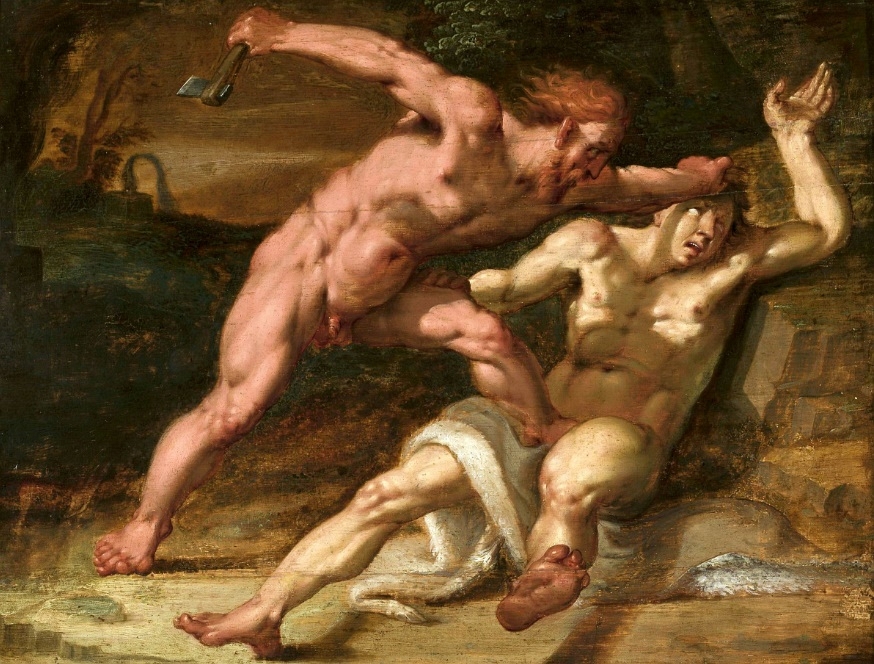
The curse of the Firstborn Cain
In Medieval Europe, it was the eldest son, cursed Cain, who was associated with the “Wandering Jew.” There he was imagined as a figure forced to wander the earth for all of eternity for the transgression of killing his brother. Yet this understanding derives from a misinterpretation whether deliberately intended by Church propaganda or otherwise. Here the symbols may have, in fact, been inverted, so as to take on the opposite of the original meaning. Hence this medieval object of scorn was, esoterically, Aryan while his wrongfully slain brother, like Christ, a Jew or proto-Jew.
It is true there are some clues suggesting that Cain may be Jewish or proto-Jewish. After all, as this study explicates, and as the New Testament reveals explicitly, Jewish parabolist are willing to cast Jews as villains. The first clue is that, narratively, Cain is born directly after the exit from Eden. Hence, if we assume that Eve has had relations with “the serpent”, theoretically Cain is the “Son of the serpent.” On the other hand, this is not a genuine consideration. After all, both the serpent and Adam are thrown from the garden with the two indicated as, thereafter, eternal rivals.
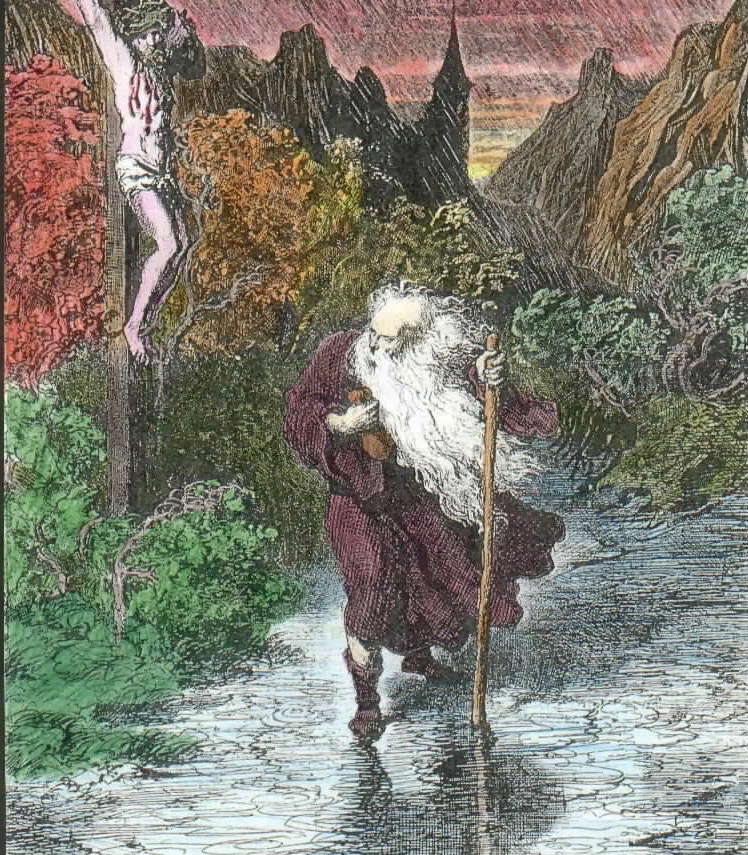
Nevertheless Cain as “serpent seed” is a premise held by some Protestant Christian denominations. This premise even has Jewish origins, whether developed mistakenly or developed to deliberately mislead. The language in Genesis as well may or may not be suggestive that, with Cain, Eve is bearing the child of the Jewish God. To wit “And Adam knew Eve his wife; and she conceived, and bare Cain, and said, I have gotten a man from the Lord.”[1] The word for lord here is Yahweh.
Likewise, an important descendent of Cain’s line, Tubal-Cain, will become “an instructor of every artificer in brass and iron.”[2] Thus he will become a smith arguably something similar to the Semitic Vulcan. There is maybe here a sense of Pelasgians prior to the flood occurring in Greek mythology.
Though with Cain’s descendants varied specialization is seen with later generations becoming not only artisans but shepherds and musicians. The life cycle of a civilization is depicted where the artisan Tubal Cain represents a terminus, a people grown aged, Semitic. In the end, from a race of producers and builders they will become a race of peddlers, yet, unlike Jews, settled, declining and without a cohering Religion.
Here we see evidence that Cain is an Aryan founder of civilization, a Romulus figure. After all, it is he that establishes the city called Enoch, presumably the first to ever exist. This sort of honesty is characteristic of JEM which assumes itself inscrutable. Hence we see the problem of the Medieval Church regarding an Aryan founding figure like Cain as villain.
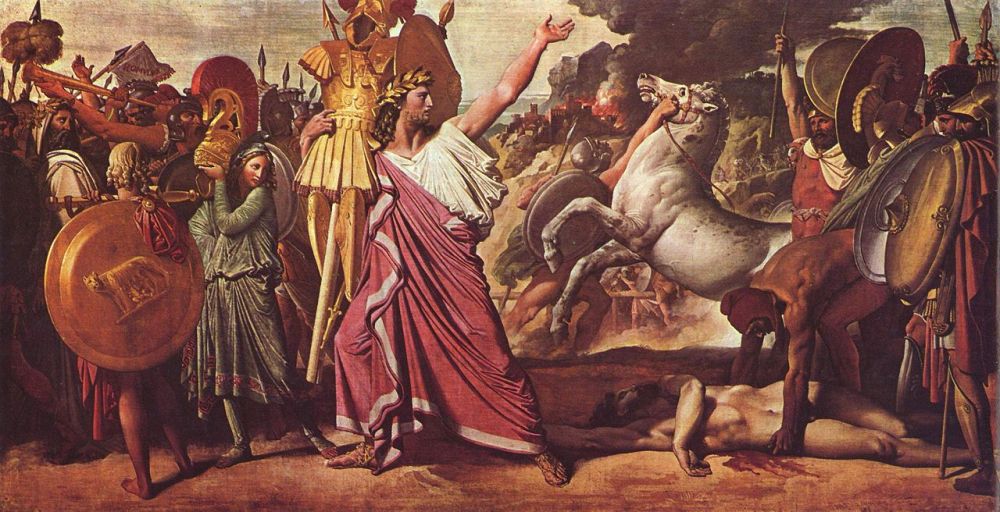
That Cain’s descendent Tubal-Cain becomes an “instructor of every artificer in brass and iron” seems to assign a lower status to him and/or indicate a civilization fallen to a low point. Again, the metals brass and iron as appearing, for example, in the colossus of Daniel 2 and Plato’s “Myth of Metal” suggest either a low class or indicate a civilization fallen to a low point. This would, of course, fit the broader narrative. Tubal-Cain, not Cain, is the prodigal child. It may also suggest Tubal-Cain as an unskilled artisan, relative to the knowledgeable Jew. This is a problem this study will help remedy.
Another clue suggesting Cain as Aryan, if not his descendants, is that he takes the profession of the Aryan Adam and, indeed, the Roman Mars. He becomes first a farmer, a producer. Abel, on the other hand, is the shepherd, the archetypal profession of the nomadic, Jewish patriarchs. This is true even if we understand this profession to be more metaphor than anything else. Here, at least from the Jewish perspective, vis-à-vis an Aryan civilization, we understand Apollo, “the protector of flocks,” more connected to enclosures and guardianship, while Bacchus and Mercury more closely connected to seducing, leading and shepherding. With Jews, the figure of Dumuzid, a shepherd and consort of the Aryan Inanna/Ishtar, is perhaps the earliest model. In fact, he may harken to a time when Jews actually were still shepherds.
Again, the “farmer” as both a historical and mythological figure, while representing the Aryan here in contrast to the Jewish shepherd, does not represent the Aryan in his purest conquering, migratory form, Apollo upon the chariot. On the other hand, farming does become the basis of an Aryan civilization building. Regardless, here we understand Cain, the Aryan, as the first born of Adam. Hence we find suggested in this parable, a land occupying Aryan, “first born” Cain, encroached upon by a late arriving or “second born” Jewish Abel. Seth will succeed the slain Abel as “the Jew” in the family. To wit, in Genesis Eve says: “God has granted me another child in place of Abel, since Cain killed him.” [3] His name, as suggested elsewhere in this study, is doubtlessly taken from the Egyptian God Seth, a God of foreigners and even, as with the Hyksos, invaders.

Importantly, Abel is understood as pleasing to the Jewish God, while Cain is displeasing to him. To wit, in Genesis 4:3 – 4:4 it reads:
“And in the course of time, Cain brought some of the fruit of the soil as an offering to the LORD, while Abel brought the best portions of the firstborn of his flock. And the LORD looked with favor on Abel and his offering.”
This expression “firstborn of his flock” is, of course, meaningful and goes to the heart of our discussion. Here flock, consistent with the metaphor as it appears in Christianity, is doubtlessly a reference to humans. Likewise, as this study explicates, this expression “first born” refers to Aryans. Here they become “sacrifice”, “burnt offering” or exploited resource. Hence Cain, who is “firstborn,” is indicated here, esoterically, as reacting to a perceived or real exploitation by a “second born” or encroaching Jew or proto-Jew. The sacrifice of the “first born” to a Jewish God becomes a repeated theme in the Hebrew Bible as the reader may already be aware.
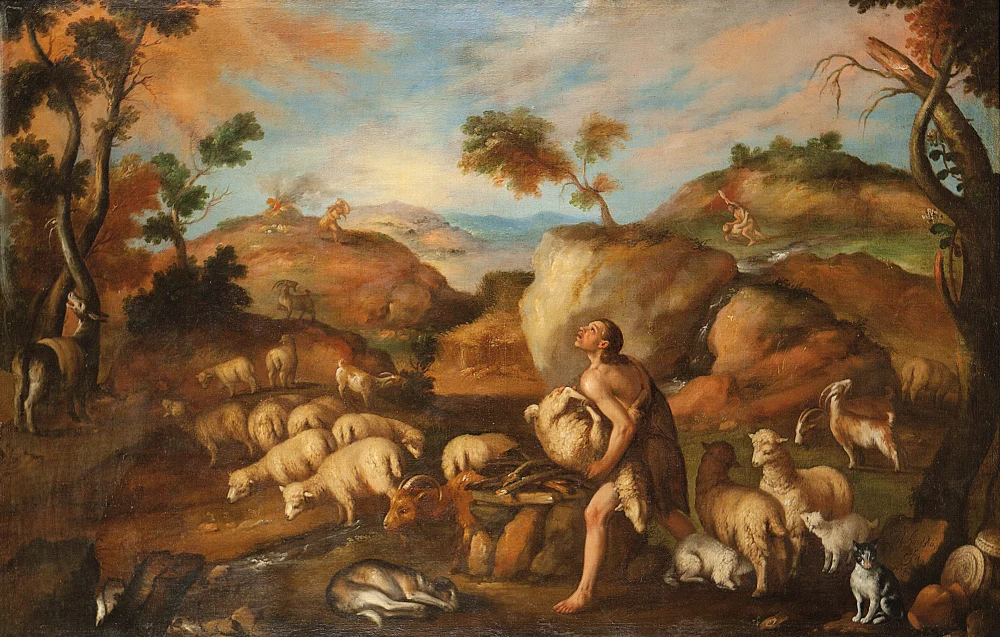
The name Tubal-Cain appears to indicate Aryan as well. Indeed, while it is often guessed Tubal-Cain is named, in part, after the patriarch Cain, to distinguish him from Japheth’s son Tubal, it is almost never remarked the name Tubal may be used here to identify him as Aryan. After all, Japheth’s is understood as fathering the Europeans. The Jewish Historian Josephus wrote “Tubal [son of Japheth] gave rise to the Thobeles who are now called Iberes.” Iberes would have dwelt in Caucasian Iberia or in present day Georgia. Likewise we understand the city of Enoch, which presumably Tubal-cain inhabits, is settled somewhere to the East of Eden. Whereas Eden itself, to the extent it is considered literally, may be in the Anti-Lebanon mountain ranges as this study explicates.
A common rendering of Tubal, תבל, translates in modern Hebrew as “world”, “universe” and “macrocosm.” This suggests something larger than Jewry, a host perhaps. Likewise it emphasizes something dramatic in Tubal-cain’s destruction during the flood. Indeed, the name Cain obviously appears in the name Tubal-cain as a reference to the earlier Cain. This may make the name as much of an Aryan identifier as Tubal.
After slaying Abel, Cain will receive a mark from the Jewish God ostensibly protecting him from harm despite having been cursed for killing Abel. This mark may or may not share a significance with the mark that the followers of the wolf-tailed beast in Revelation 13 are given. To wit, its mention in Revelation 13 may indicate them as Aryan like Cain. As this study explicates, the wolf-tailed beast in Revelation 13 is certainly an Aryan figure.
Here the Jewish God declares “If anyone slays Cain, then Cain will be avenged sevenfold.”[4] This divine immunity, blessed by the Semitic number seven, seems at first blush to suggest Cain as a Jewish figure. Yet there appears to be a profound sense of insincerity here on the part of the Jewish God. Indeed, this statement is in fact one more curse. After all, we assume that a similar if not greater guarantee of vengeance would be extended to the Jewish God’s favorite son Abel.
Lamech, a sixth generation descendant of Cain, will boast “I have slain a man for wounding me, a young man for striking me. If Cain is avenged sevenfold, then Lamech seventy-sevenfold.”[5] Various legends, Jewish or Talmudic in origin, have appeared suggesting that this references Lamech’s eventual killing of the long-lived Cain. That the person identified here is a young man or weyeled,וְיֶ֖לֶד, possibly indicates him an Aryan. Again, the racial youth of Aryans relative to Jews emerges as a theme in the JEM. Cain as well, save Adam, is the “youngest man” in his line. Here, again, the Aryan maybe “firstborn” relative to the “second born” Jew, yet racially less aged.
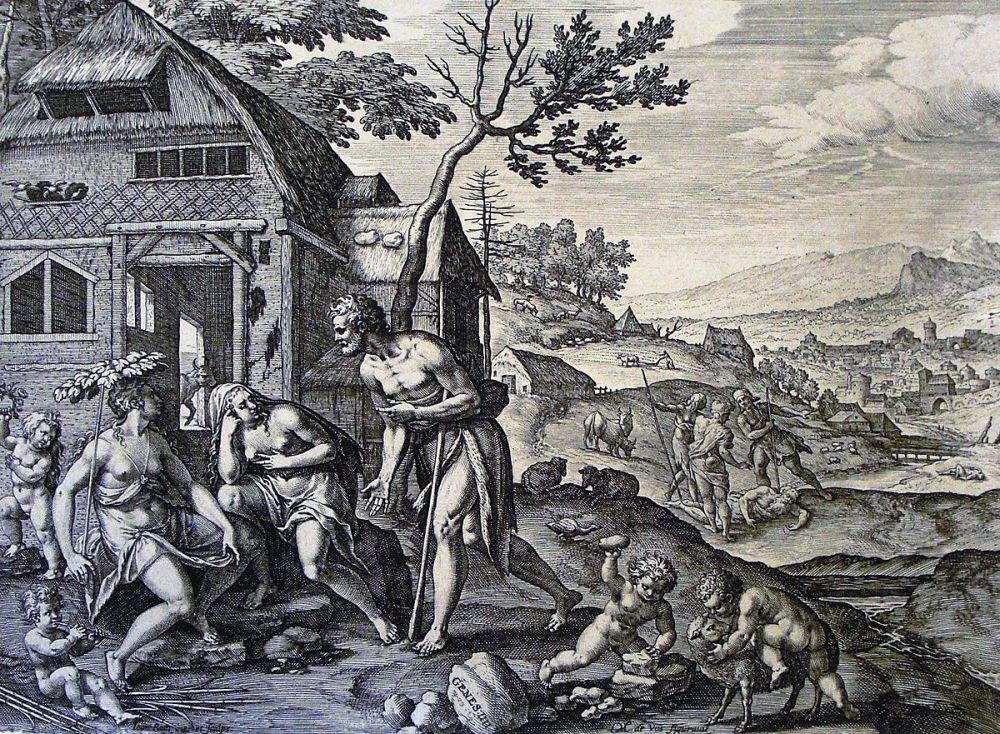
Likewise the flood is, at least esoterically, a reference to Saturn’s castration of Caelus or to the release of Anu’s seed. We remember that Caelus or Uranus may be related to rainfall perhaps precisely because of his castration that produces the aqueous Venus Pandemos. Likewise it is clear in the Bible that the flood is connected to a racial degeneration. Here we understand that the Elohim have grown irritated with Nephilim or angels that have mixed with “the daughters of men.”[6] These Nephilim are ruling Aryans disintegrating into a Semitic substratum.
The martial character of Cain’s line suggests a kind of caricatured Aryan, contrasted with Abel and the gentler line of Seth. Indeed, Lamech’s famous claim that he will be avenged seventy-sevenfold is frequently referred to as the “Song of Swords.” The name Lamech, לֶמֶךְ, likewise tends to dissuade one from believing him a Jew. In modern Hebrew it translates as “Lummox” and “Good for nothing.” Though a less famous Lamech will also appear as Noah’s father. Indeed, there is much more to this story than meets the eye.
Indeed, the deliberate close similarities between the names given in the lines of Cain and Seth, make it clear that the two lines are esoterically indicated as entwined. Here, as in Eden, the Jewish vine or Serpent enwraps the Aryan Tree of Life. Here intermixture, cohabitation and racial cuckoldry are indicated between all the generations descending from Adam and the Serpent via Seth. In two important cases the exact name is given: Enoch and Lamech. These are obviously intended as the same people.
According to the fabulous lifespans and long periods before fathering children given in Genesis 5 for the patriarchs of Seth’s line, Cain may have wandered for as many as 492 years before ostensibly fathering his first son Enoch. This indicates a fabulous male potency. Yet it is entirely plausible within the rules of these parables. Indeed, Noah had his children at 500 before dying at the ripe old age of 950. Yet likely with Cain’s Enoch it is suggested that the Jew or proto-Jew Seth was the real father.
Perhaps it is meaningful Enoch חֲנ֑וֹךְ, means in Hebrew “education”, “breeding”, “upbringing”, “schooling”, “accustoming” and “training.” In the pseudepigraphic Book of Jubilees he is indicated as a man trained in writing, astronomy and history by the angels. It is interesting as well that the name of the city Cain establishes is Enoch. Here perhaps an Aryan nature is given to the creator of civilization, while a Semitic character to the inherited civilization itself. Though, of course, this is only because of the presence of Seth’s seed.
The give away though, that there is a “Seth in the woodpile”, is that the Lamech in Seth’s line dies at the ripe old age of 777. This is doubtlessly a reference to the line “If Cain is avenged sevenfold, then Lamech seventy-sevenfold.” The Jewish historian Josephus, for his part, contended Seventy seven was the number of children Lamech ended up having. Clearly the Lamech descended from Seth and the Lamech ostensibly descended from Cain are the same person. This study explicates how a Jewish or proto-Jewish Lamech may, like Jacob, nevertheless be the “father” of Aryan children such as Tubal-Cain. And indeed, Genesis explicitly mentions Seth’s Lamech had other children.
Hence it is suggested that Cain’s punishment for killing Abel was being cuckolded by the seed of Seth for several generations unto extinction. Indeed, this is prophesized during the exit from Eden. There the Jewish God declares to the serpent “On your belly will you go, and dust you will eat, all the days of your life. And I will put enmity between you and the woman, and between your seed and her seed. He will crush your head, and you will strike his heal.” [7]
Interestingly the serpent is indicated as eating dust “all the days of [his] life.” Of course dust is the substance from which Adam is made. In fact, four verses later God says to Adam: ““For dust you are, and to dust you shall return.” [8] Here it appears we find a “Consumption motif” where a Jewish figure devours an Aryan consumable. These are common in JEM as this study explicates.
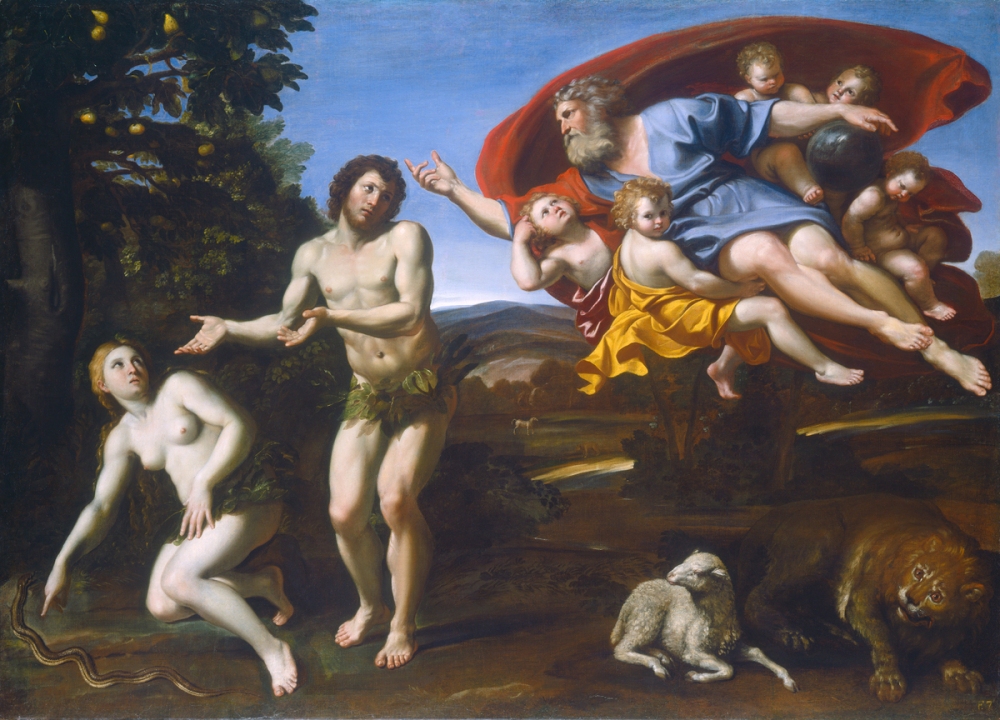
From the Aryan Adam descend six patriarchs up to Lamech, from the Semitic Seth descend seven patriarchs up to Lamech. Hence again with the contrasted numbers of six and seven, consistent with the numerology, we see Aryan as creator and Semite as reaper. Noah appears here as an eighth and primary arch-patriarch in a postdiluvian world. The number seven also seems to give a cyclical sense to this civilization fathered by Cain. Here again the Jewish God appears to close a civilization. The seventh day is a day of rest and also completion, to wit, destruction. Hence this “Curse of Cain” is something we will seek to end.
Indeed, the most important clue that Cain is Aryan is that his line is extinguished while Seth’s, via his descendent Noah, succeeds. Again, JEM, however subtly or cleverly is, in its imitable way, obliged to indicate racial victory. The “gentle” Seth, a reference to both the Egyptian God Seth and Typhon, the Serpentine Son of Saturn, is the real “Serpent Seed.” The “Song of Swords” was song by Seth’s descendant and to the extent it is intelligently called by that name, it is a reference to the phallus.
Here importantly, it all began in Eden, where an Aryan man is psychically formed, even “bothered” or “molested” one might say, by a Jewish or proto-Jewish Chthonic cult. Like the ephemeral Angel, he wasn’t made immortal, but like a citrus tree in an orchard, appearing from dust, to yield and then perish. As the Jewish God told Adam as he released him from Eden “For dust you are, and to dust you shall return.”[9] Fortunately the powers of Prometheus and Vulcan do not extend over immortal Apollo. But rather Apollo’s extends and shall be emphatically asserted over theirs.
[1] Genesis 4:1
[2] Genesis 4:22
[3] Genesis 4:25
[4] Genesis 4:15
[5] Genesis 4:24
[6] Genesis 6.2
[7] Genesis 3:15
[8] Genesis 3:19
[9] Genesis 3:19
Interesting is the difference in the relationship between the brothers in the stories of Cain and Abel and Jacob and Esau. While Cain kills Abel Esau forgives Jacob and accepts being dominated by him.
This reminded me of the movie Rain Man. The parallels are very clear.
LikeLiked by 2 people